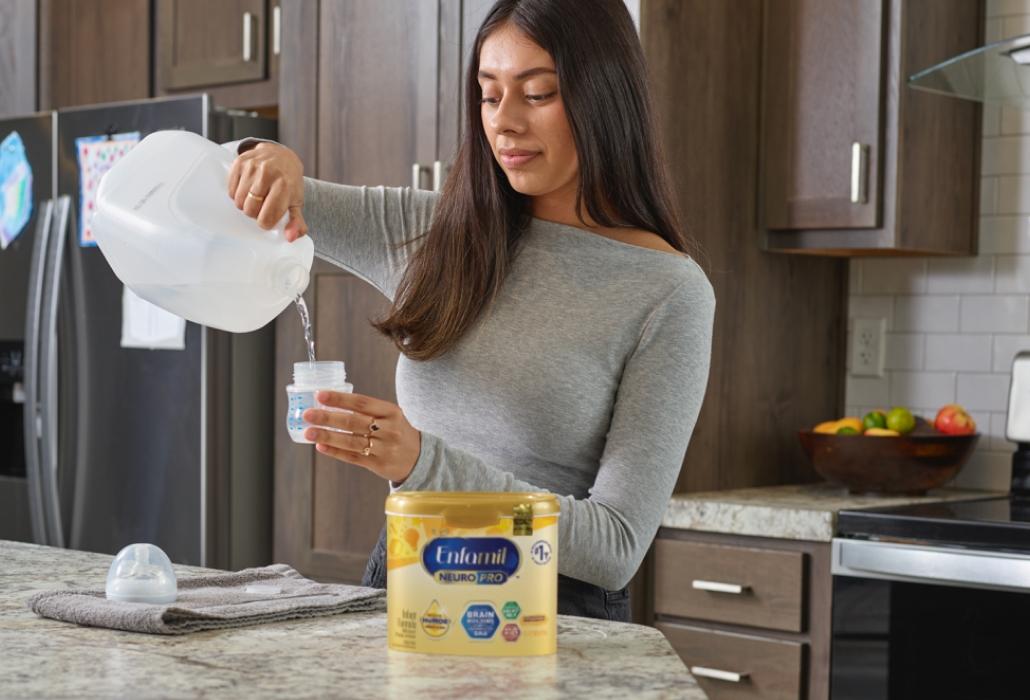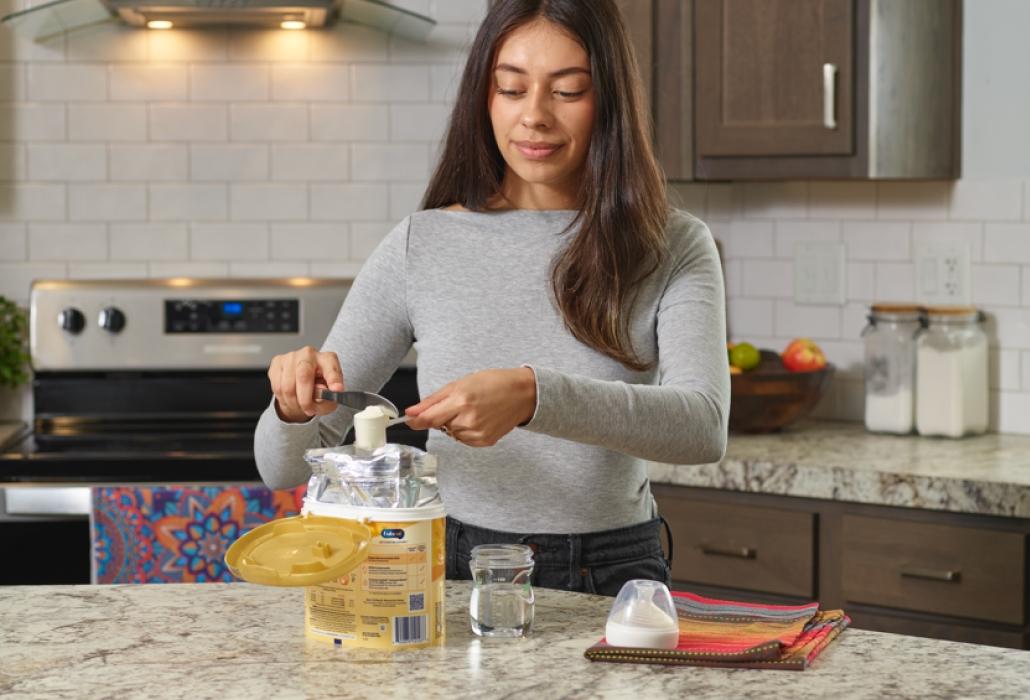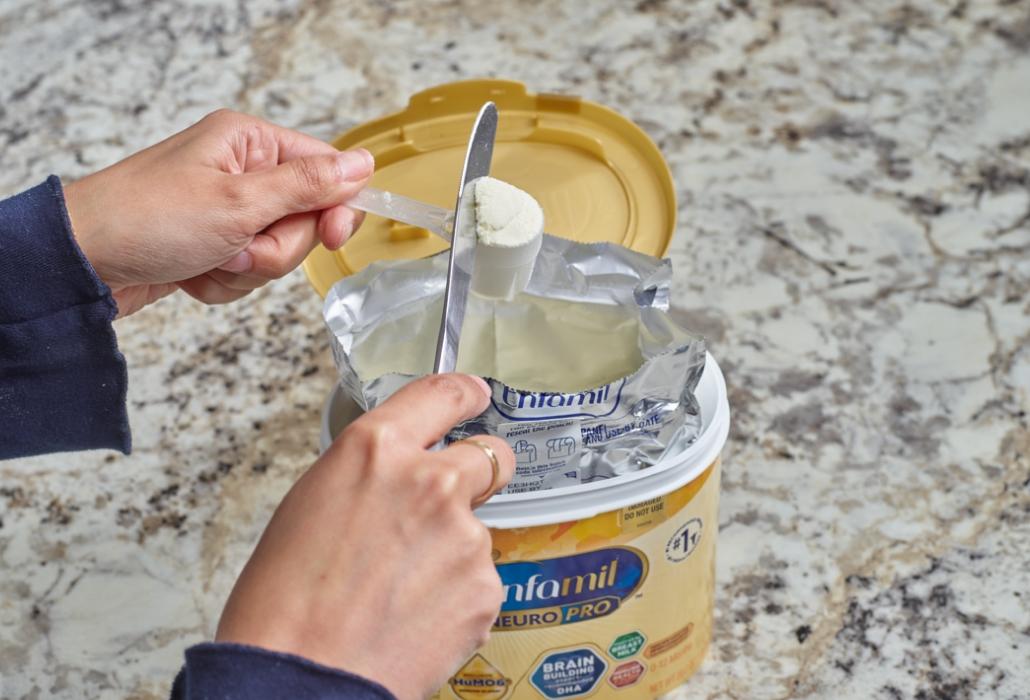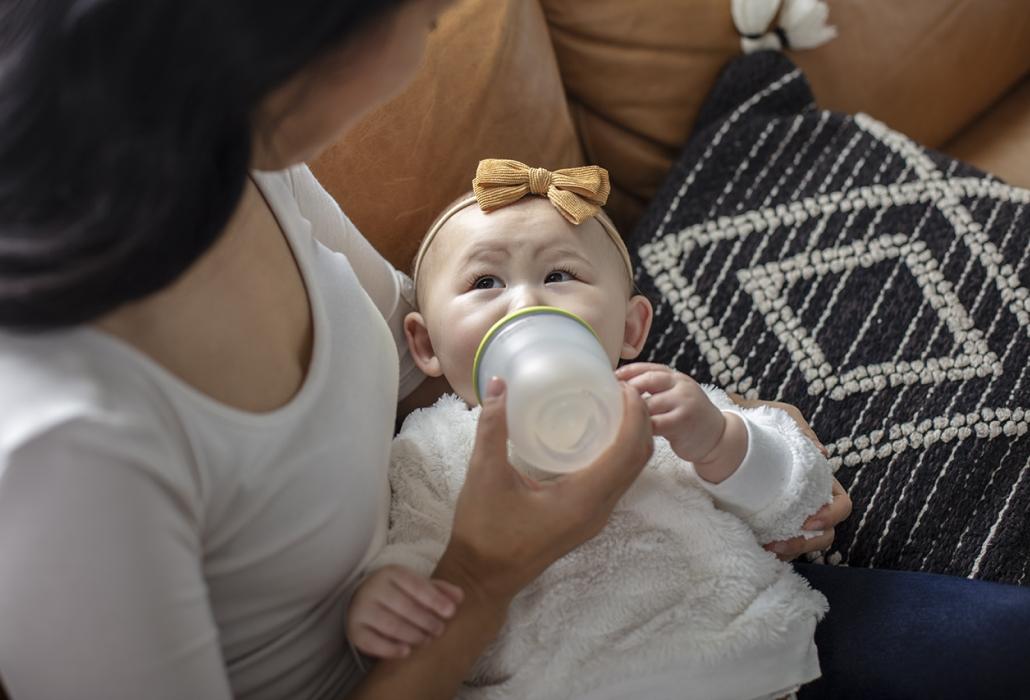No Enfamil products are affected by the recent recall initiated by another manufacturer. Learn more about our quality standards.
Learning how to prepare baby formula is a key skill for many parents and caregivers. We’ll show you how easy it can be in 1-2-3!
The first step to making baby formula is to wash your hands thoroughly with soap and water. We want to avoid exposing babies, who have developing immune systems, to any unwanted germs. Check the use by date on the container to ensure the formula hasn’t expired. If your container is damaged, dented, bulging, or leaking, call the number listed on the back and do not use it.
And speaking of those germs…you may want to sterilize the bottle with boiling water. Washing bottles with hot water and soap removes germs, but sterilization helps eliminate potentially harmful contaminants and bacteria, providing additional protection for your baby's developing immune system.

Always follow the instructions on the label for measuring and mixing the formula; pour the desired amount of water into the bottle first, then the correct amount of powder.

You’ll want to use room-temperature water. Your container will indicate how much water you’ll need based on how much formula you’re using. Pour desired amount of water into the bottle and add powder per the directions indicated. Powder should be measured with unpacked, level scoops, using the scoop enclosed in the can.
Pour the water first, then the powder. This helps everything mix properly.

“Unpacked and level” means you scoop the powder and then use a clean knife to even it out.

| Formula Type | How to Measure |
|---|---|
| Ready-To-Use | Comes pre-measured; check label for amount. Shake well and serve. |
| Liquid Concentrate | Check the label for the exact formula-to-water ratio. |
| Powdered Formula | Check the label for the exact formula-to-water ratio. |
Make sure the cap is on tight, and shake well. Make sure your formula isn’t too hot by placing a drop on the inside of your wrist. The liquid shouldn’t feel warm or cool—room temperature is perfect.

Then, it’s ready to serve your hungry little one!

Try to feed at about a 45 degree angle to help your baby feed at their preferred pace and avoid swallowing too much air.
If you still have questions about prepping your baby’s bottle, consult your pediatrician for guidance.
All information on Enfamil, including but not limited to information about health, medical conditions, and nutrition, is intended for your general knowledge and is not a substitute for a healthcare professional's medical identification, advice, or management for specific medical conditions. You should seek medical care and consult your doctor or pediatrician for any specific health or nutrition issues. Never disregard professional medical advice or delay seeking medical treatment, care, or help because of information you have read on Enfamil.